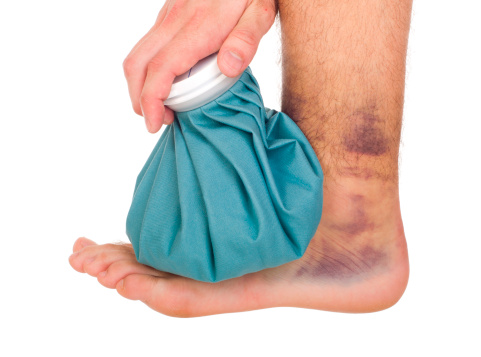Should you use ice or heat for an injury?

You’re playing basketball, driving the lane pretending to be your favorite NBA star when suddenly pain is radiating up your leg – should you apply a heating pad or an ice pack?
When to use an ice pack
Cold packs slow down blood flow to injuries to reduce pain, muscle spasms and swelling. This makes ice the best option for treating, doctors say. Use an ice pack with the following injuries:
- Pulled muscles
- Injured tendons in the thigh, back or calf
- Strains and bruises that occur during lifting
- Acute irritation or tendinitis in your knees, wrists, elbows or foot after an activity
Cold therapy eases redness, swelling and tenderness. Icing is vital for the first two days to reduce swelling and secondary tissue damage.
“Ice is better to use after an activity is completed, especially if you notice some swelling,” says Dr. Greg Primus, orthopedic surgeon at Advocate Trinity Hospital in Chicago. “Also, it is great to use when there is soreness or bad inflammation.”
Dr. Primus recommends not applying ice longer than 20 minutes, and wrapping ice or ice packs in a thin towel rather than placing directly on the skin.
“One of the biggest mistakes people make as an athlete, is if you get injured during an activity to stop that activity, put ice on it and then try to come back later and start playing,” says Dr. Primus. “Continuing to play when possibly injured can actually increase your risk for injury.”
Heat
The purpose of heat is to open up blood vessels to increase blood flow.
When blood flow increases, it supplies oxygen and nutrients to relieve or reduce pain in joints and relax sore muscles and ligaments. As a result, it is best to apply heat if you have stiff joints or chronic muscle pain after exercising. Heat also helps lower the chances for muscle spasms and increases range of motion. It is also beneficial for those with arthritis issues.
“Heat is really good before an activity,” says Dr. Primus. “Heat drains a lot of blood and gets the muscles lubricated and the juices flowing.”
A heating pad, which can include gel packs, hot water baths and microwaveable packs, should not be applied directly to the skin.
Dr. Primus also recommends the following:
- Do not apply heat for longer than 20 minutes without a doctor’s recommendation
- Do not use heat if you have poor circulation
- Do not use heat on an open wound or stitch
Related Posts
Comments
One Comment
About the Author
health enews staff is a group of experienced writers from our Advocate Health Care and Aurora Health Care sites, which also includes freelance or intern writers.


















fyi